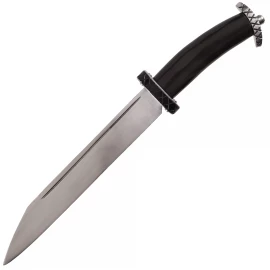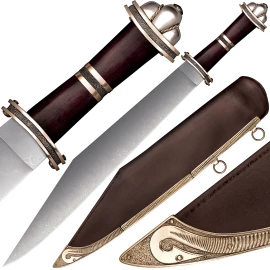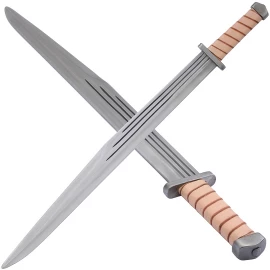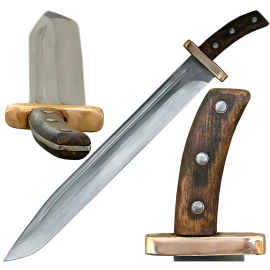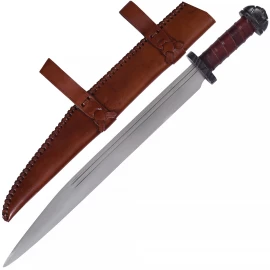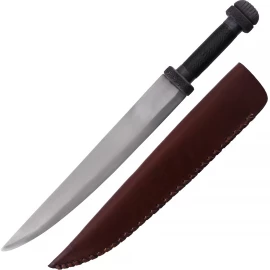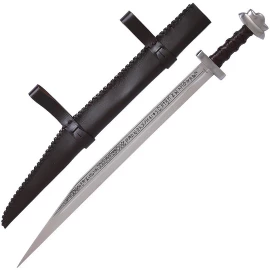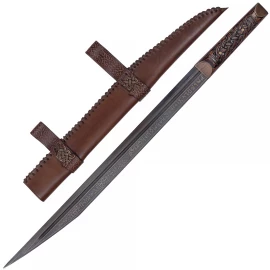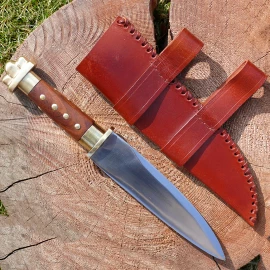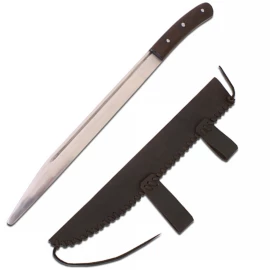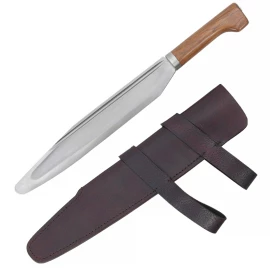Seaxes, Saxes
Filter products
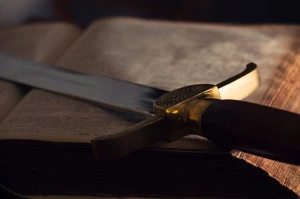
In the first part of our article series dedicated to famous swords, we talked about some of the most famous cold weapons we know from history. What other weapons earned their…
Seaxes, Saxes
The general trend, as one moves from the short to the broad seax, is that the blade becomes heavier, longer, broader and thicker. Long seaxes, which arrived at the end of the 7th century, were the longest of the seax. These were narrower and lighter than their predecessors. Initially, these weapons were found in combination with double-edged swords and were probably intended as side arm. From the 7th century onwards, seaxes became the main edged weapon (next to a francisca), sometimes in combination with small side-knives. The rest of Europe (except for parts of Scandinavia) followed a similar development, although some types may not be very common depending on location. In England long seaxes appear later than on the continent and finds of long seaxes (as opposed to knives) remain very rare in comparison to finds of swords throughout the period.
Sax (seax) as a typical weapon of the Germans
What was Gladius around the time of Christ's birth for the Romans, that was the Sax / Seax for the Germanic tribes! From about 300 after Christ Seaxes were used as a hunting and military weapon. In these saxes, to which the Saxons owe their name, the blade ridge ran into the handle without a set-off, which led to its characteristic form. Up to the 5th century AD, these simple-constructed, single-edged cut and thrust weapons hardly changed, which is why this genus is termed Saxe of the pre-Merovingian era. Beginning in 400 AD, different genera were differentiated: the short sax / short seax was used as a dagger-like impact knife, narrow and wide saxes were used as machetes and the Langsax/Langeax/Scramaseax was used like a sword.

